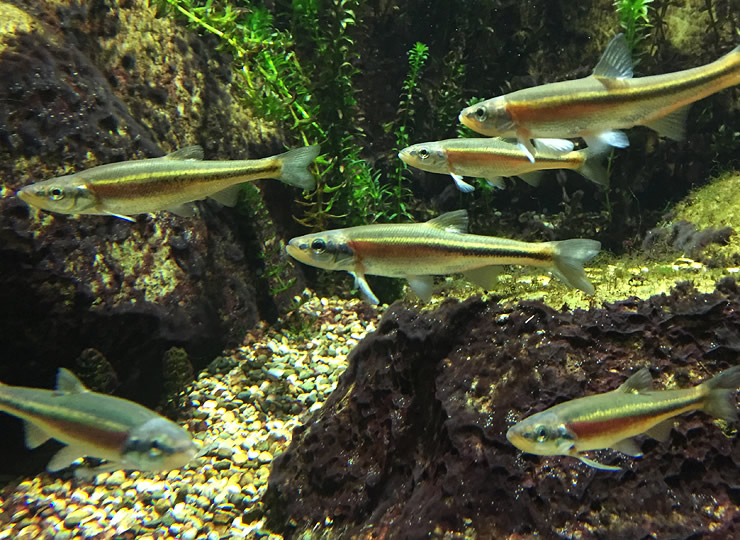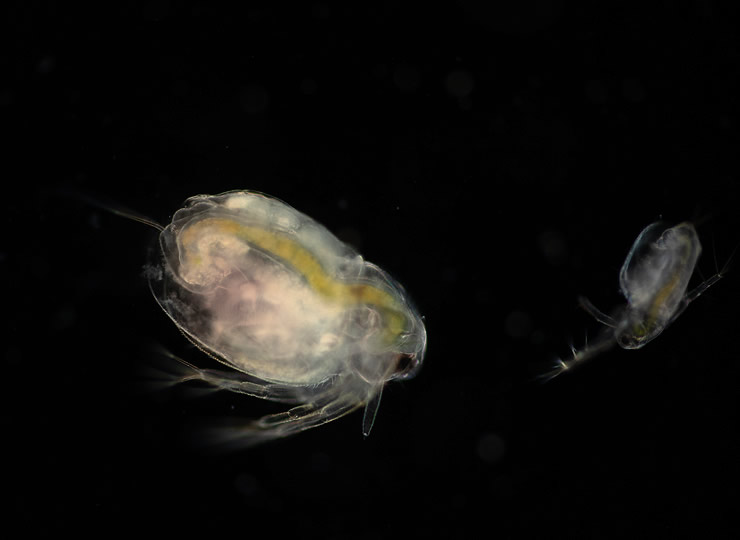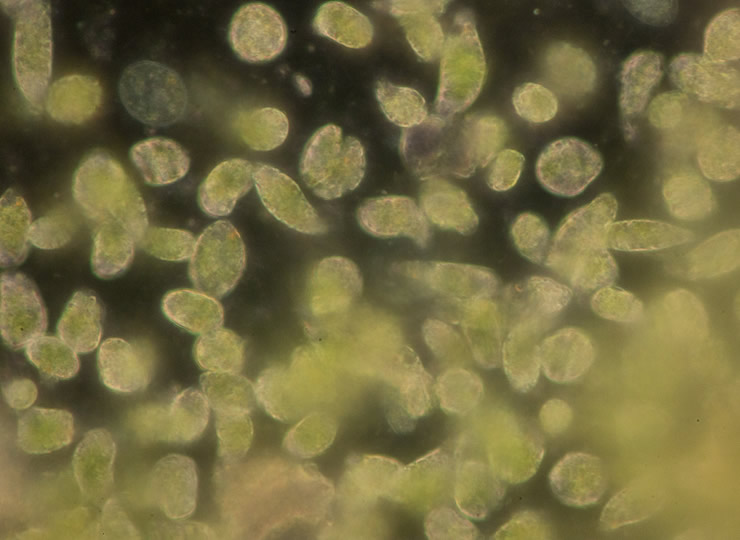Largemouth Bass
Micropterus salmoides

Largemouth bass are top predators in freshwater lakes and rivers. The effects of their presence (or absence) can cascade throughout the ecosystem.
Range map of largemouth bass
The largemouth bass is a top predator in the lakes of the midwestern United States. These bass often eat smaller fish, such as minnows. Minnows eat zooplankton, which eat phytoplankton (microscopic algae).

Freshwater minnows. They eat zooplankton and are eaten by bass. Photo credit: iStock/Getty Images Plus

Daphnia, a common species of zooplankton. They feed on phytoplankton. Photo credit: iStock/Getty Images Plus

Euglena, a common species of phytoplankton. They are at the base of the food chain in most freshwater ecosystems. Photo credit: iStock/Getty Images Plus
Small lakes, like the ones where these organisms live, are ideal systems for testing the role of a species in an ecosystem. Lakes have clear boundaries, and their food webs are often relatively simple. Scientists can also use neighboring lakes in comparative experiments, which test and compare the effects of different conditions.
Largemouth bass (Micropterus salmoides)
To test how the presence or absence of a top predator affects the lake ecosystem, scientists removed largemouth bass from some lakes and not others. The absence of the bass caused minnow populations to increase. More minnows ate more zooplankton. Fewer zooplankton led to a rapid phytoplankton increase called an algal bloom. Algal blooms use up a lot of the oxygen in a lake, which may kill many of the other species. Blooms of certain phytoplankton species can even turn the water toxic.

Two neighboring lakes in Michigan. Scientists removed largemouth bass from the lake on the left, which led to an algal bloom. Photo credit: Stephen Carpenter